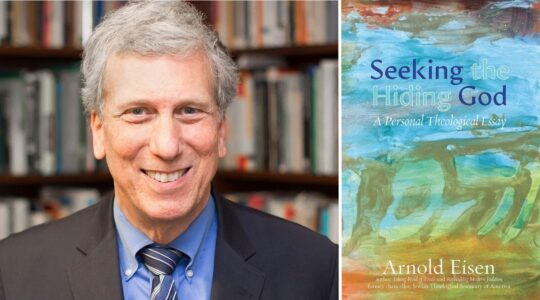One of the little-discussed effects of the economic recession on the Jewish community is that more rabbis in the later stages of their careers are finding themselves out of work.
And that’s causing a good deal of bitterness and concern in the rabbinic community about the dwindling, and changing nature, of the profession.
“We’re seeing the end of the rabbinate as we know it,” a 56-year-old Reform rabbi insisted, noting that congregations today are looking for “comfort,” not challenges. “The intellectual tradition of the pulpit has died,” said the rabbi, who asked not to be named out of concern for the prospects for his next job search.
The data is sketchy and the reasons differ as to just why the rabbinic market is falling. But a number of people close to the situation say that with Conservative and Reform synagogues losing an estimated 20 to 30 percent of their membership, rabbis increasingly are the sacrificial lambs on the altar of congregational cost-saving.
The Orthodox community does not appear to be experiencing a decline, but within the liberal movements there are stories of rabbis let go to make room for a merger between two synagogues, rabbis finding their full-time position cut to half- or part-time, even rabbis on food stamps.
Rabbi Leonard Thal, who came out of retirement as senior vice president of the Union for Reform Judaism (URJ) to serve as interim director of rabbinic placement at the movement’s Central Conference of American Rabbis (CCAR), said there is “no question that Reform congregations and rabbis have been hit” by what he calls “a perfect storm.”
With the economy hurting and synagogue membership down, congregations are downsizing staff, often deciding not to renew the rabbi’s contract. “The result is fewer overall positions,” he said.
In addition, some rabbis who would be retiring are extending their careers because they need the income, holding up the flow of transition, and recent rabbinic graduates are having a hard time getting placed.
Rabbi Thal said that Hebrew Union College-Jewish Institute of Religion, the major Reform seminary, did not anticipate the decreasing need for rabbis a few years ago and kept class sizes constant.
In fact, just a decade ago, there was talk of a shortage of rabbis, particularly for communities with small and mid-sized Jewish populations.
“The bottom line is that we have more rabbis looking for positions than we have congregations looking for rabbis,” Rabbi Thal observed.
Support the New York Jewish Week
Our nonprofit newsroom depends on readers like you. Make a donation now to support independent Jewish journalism in New York.
He advises rabbinic colleagues to “cast their net more widely” and consider moving to areas of the country they might have previously rejected, or think about non-pulpit positions like the chaplaincy or campus Hillel work.
The CCAR is “doing more than ever” in offering professional development courses and support systems, he said.
The 56-year-old Reform rabbi cited earlier observed: “We’re dealing with a generation raised on consumerism, and people want rabbis who can teach, not rabbis who can learn [Torah].”
Based on data he has seen but which has not been made public, the rabbi said congregations are not looking for scholars. “They’re looking for a pastor, not a prophet. It means a Solomon Freehoff or a Milton Steinberg wouldn’t hold a job today,” he said, referring to two rabbinic giants of the 20th century known for their scholarship, knowledge and writings.
Some observers say that conditions for Conservative rabbis are even more dire.
One leader of the movement acknowledged that the problem of “ageism is staggering, with solid, good rabbis” in their 50s “losing jobs and having great difficulty finding other positions.”
That may be due, in part, to the perception that congregations, faced with shrinking membership, feel that rabbis in their 30s will be better able to reach the target audience of young families and attract them to join. But those in the trenches say that the youth-driven culture negates the acquired wisdom and experience that veteran rabbis have to offer.
“The American rabbinate is facing a tremendous challenge, with far-reaching implications, and people are not thinking this through,” one Conservative leader said, noting that the rabbinate may become a less appealing profession “and the community will suffer.”
Rabbi Stephen Listfield, who is serving this year as interim rabbi at a Conservative congregation in Massapequa, L.I., said he knows rabbis who are “scrambling around now,” from one pulpit to another, because they can’t afford to retire. He said the fact that two dozen rabbis have applied for the position coming up this summer at his synagogue, despite its small size and serious financial issues, is proof of the paucity of rabbinic posts. [In the Conservative movement, interim rabbis are ineligible for consideration to stay on in the pulpits they serve.]
He quotes a colleague who observed that “rabbis are the biggest contributors to their synagogues — maybe not in actual dollars but in having their salaries cut.
“Who else is giving 10 percent of their income to the synagogue?” he asked only half-kidding.
Rabbi Listfield said that while the economic recession is an external reality, the synagogue community, and especially the Conservative movement, should be doing some soul-searching as to why it is losing members.
Support the New York Jewish Week
Our nonprofit newsroom depends on readers like you. Make a donation now to support independent Jewish journalism in New York.
“We should be looking within to see where we might be falling short in this precipitous decline, and asking ourselves, ‘do we have anything to say to people?’
“If people who lead busy lives are going to come to a three-hour service in Hebrew at the same synagogue every Shabbat, they need to hear a message beyond ‘be a mensch,’” he said. “They need to hear that our laws come from God or that we are part of a 4,000-year tradition that has stood the test of time by demanding that people think for themselves and improve themselves.
“But that doesn’t seem to be the message.”
In the meantime, the Conservative movement is working to retrain rabbis; a distance-learning program in management (to become executive directors for large congregations or other nonprofits) is oversubscribed. And officials say that most older rabbis who have been let go are able to find other pulpits in smaller, less prestigious or more remote congregations.
The lingering message, though, is that the synagogue community should be focusing on this issue, not only on the short-term problem about what happens to the older rabbis themselves, but what kind of a rabbi do congregations want, and how can the profession be sustained and invigorated.
The challenge is clear: train, support and honor rabbis who can educate and inspire others with the wisdom and meaning of Judaism, or watch the enterprise continue to decline.
The New York Jewish Week brings you the stories behind the headlines, keeping you connected to Jewish life in New York. Help sustain the reporting you trust by donating today.





